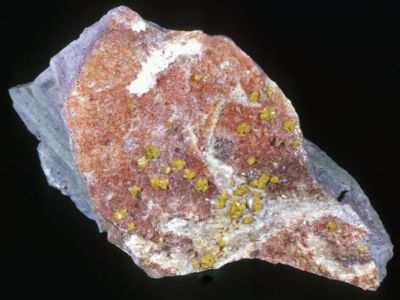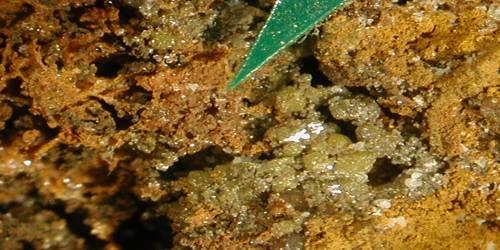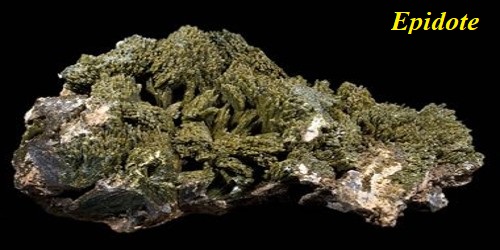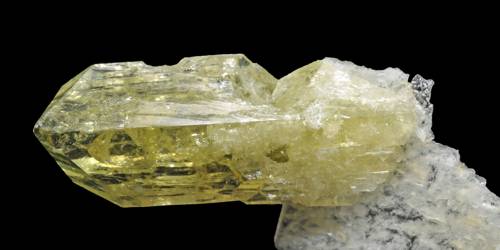Kadyrelite is a mineral with the chemical formula Hg4(Br, Cl)2O discovered in 1987. Although the mineral is white, the black refers to its reaction with ammonia, which gives a beautiful black coloration. It was named for the locality: Kadyrel deposit, Tuva, Siberia, Russia.
General Information
- Formula: Hg4(Br, Cl)2O
- Crystal System: Isometric
- Name: For the Kadyrel deposit, Russia, where it occurs.
- Type: Isotropic

Fig: Kadyrelite
Properties
This mineral has an adamantine-resinous luster, with the pale yellowish-white streak. The fracture on this mineral is sectile, meaning curved shavings or scrapings produced by a knife blade.
- Cleavage: None
- Color: Orange, Dull orange.
- Diaphaneity: Transparent
- Fracture: Brittle – Generally displayed by glasses and most non-metallic minerals.
- Habit: Granular – Generally occurs as anhedral to subhedral crystals in matrix.
- Hardness: 2.5-3 – Finger Nail-Calcite
- Luster: Vitreous – Adamantine
- Streak: Yellow-orange.
Occurrence: In cavities in carbonate veins in a mercury deposit. It occurs in an uncommon secondary mineral, formed through the alteration of other mercury minerals.
Association: Eglestonite, calomel, kuzminite, corderoite, lavrentievite.
















